You already know that brands can leverage user-generated photos from Instagram to engage consumers. Today we will measure that engagement and connect it to ecommerce sales.
With Instagram, marketers have access to a huge audience of 100 million active users snapping over 40 million photos per day and posting 1000 comments per second. Instagram is more than a place for selfies and cat pictures. Consumers are photographing and discussing brands every day:
- #Starbucks – 2.6 million photos
- #Nike – 12.7 million photos
- #Michaelkors – 1 million photos
- #Chanel – 2.4 million photos
- #Audi – 1 million photos
Brands of all sizes are becoming keenly aware of the large marketing opportunity with Instagram’s massive audience. However, some brands remain hesitant to add another social platform into the mix because of the often cited problem with social media marketing…
Highly Measurable but Difficult to Link to Sales
Social media marketing gets a bad rap because, in many cases, it’s not easy to connect one’s effort or expenditure to sales or revenues. In fact, according to a white paper published by Adobe, 88% of surveyed marketers didn’t feel they could accurately measure ROI from social media marketing.
Sure, most marketing platforms can track likes, follows, shares, etc., but it usually ends there. Linking those metrics to incremental revenue remains more art than science. And if you ask 10 different people the value of a new follower, you’ll get 10 different answers.
Marketers are hungry for tools that not only help with social media marketing, promotions, and campaigns but that also provide a measurable and causal link to what really matters – sales! The problem has been that social media marketing shares some similarities with traditional advertising:
Half the money I spend on advertising is wasted; the trouble is I don’t know which half – John Wanamaker
The good news is that new tools, platforms, and services emerge every day attempting to bridge the gap between social media marketing expense and revenue. Whether you use an end-to-end SaaS platform, cobble together various services, or tap directly into Instagram’s API, if you follow the steps outlined below to leverage user-generated content from Instagram, you’ll be on your way to increasing your ecommerce sales.
Have a look at the following diagram that breaks down the overall strategy into simple steps:
- Launch a campaign or contest to aggregate, curate, and display user photos onto a microsite or Facebook page tab (engage consumers)
- Identify your products and link photos, from microsite or Facebook page tab to ecommerce product pages (increase traffic and click-throughs)
- Embed customer photos directly onto product pages (demonstrate social proof)
Encourage Fan Participation – Launch a Campaign or Contest
If you’re not Nike or Starbucks with millions of hashtagged photos of your brand already on Instagram, you’ll likely need to launch a campaign or photo contest to get your audience jazzed about sharing brand relevant photos you can aggregate, curate, and display.
Let’s say you are a clothing brand and you’re planning an online end of summer sale. You could launch an Instagram contest around a theme of “Capture your favorite summer moments in XYZ for a chance to win a $500 online shopping spree.” Great! It’s pretty straightforward, and you can expect to get some content to leverage.
While I could devote an entire post to effectively launching and promoting user-generated photo campaigns, I’ll leave you with a few tips to get you started:
Choose an appropriate campaign hashtag
Since you’ll be aggregating content through a hashtag, make it easy for consumers to share photos with your brand by choosing a hashtag that balances uniqueness with simplicity.
Also, you’ll definitely want to avoid blending too many words into one hashtag. Instead, focus on making it memorable and brandable.
And please look for hidden words if you combine multiple words… You don’t want to end up like Susan Boyle with her new album launch party #SusanAlbumParty. Take another look… Maybe this will help you see it – #SusAnalBumParty. True story.
Choose a theme
Get your fans to focus on your brand by giving them a specific theme to capture (that includes your products). If the theme is too broad, you’ll end up with a lot of mish-mash and unrelated photos. If the theme is too narrow, it will discourage people from participating because it will be too difficult to snap an appropriate photo. Keep it simple and think of ways fans can easily capture photos of themselves, relatives, and/or friends using your products in fun ways.
Display your gallery
The first step you’ll need to take if you want to leverage fan photos is to give the photos a place to live online. I’ve seen many brands launch photo contests through Instagram and not provide a gallery anywhere for people to view submissions. This is a terrible waste of effort, time, and resources.
Depending on your objectives, you’ll want to host a microsite for entries or display them in a Facebook page tab. Make sure whatever content aggregation tool or service you use gives you the ability to moderate photos. The last thing you want to do is pull hashtagged photos straight from Instagram’s API without moderation.
Once you’ve figured out how you’re going to engage your audience, you’re ready for the next steps where the real value is created. Aggregating user-generated content has little value if you don’t leverage it.
Link Photos to Your Product Pages
So you’ve launched a campaign, your fans are submitting boatloads of brand relevant photographs, and you’ve given all this content a place to live online. That’s a great start but have a look at the campaign example below.
If I’m a consumer viewing photos on this contest page and I fall in love with the sweater worn by the girl in the picture, I would have to manually navigate to the brand’s ecommerce site and spend 20 minutes trying to find the product.
If someone is interested in making a purchase, not only is this scenario not ideal, it could alienate a potential customer who cannot find the product in your store or discovers that it’s no longer available.
The easiest solution here is to identify your products in fan photos and link them directly to your ecommerce pages from your microsite or Facebook page tab gallery so consumers can go directly to your store to complete the purchase. (See below.)
Normally, social promotions, contests, and photo campaigns are a great way to drive engagement but do little for online purchases. By taking an extra step to identify/link your products to your ecommerce pages, you can help bridge the gap between your platform that provides fans with a fun way to interact with your brand and your social promotion that helps drive additional web traffic and revenues.
Since you can easily monitor the traffic and conversions from these links, begin to look for purchasing patterns to see which photos are a) driving the most traffic and b) resulting in the highest number of new sales. With this information, you can decide to more prominently feature certain photos in your contest gallery or take it to the next level and embed these photos directly onto your product pages.
Put Customer Photos on Your Ecommerce Site
So far we’ve seen how you can launch a campaign to drive traffic to product pages. Now we’ll see how to use customer photos from Instagram to increase conversions. First, a word about a psychological concept called “social proof,” which was made famous by Robert Cialdini, a noted psychologist and the author of Influence: The Psychology of Persuasion.
Social proof is the simple but powerful concept that people tend toward conformity, especially when feelings of uncertainty are high. Basically, we’re sheep. We tend to like what other people like and mimic the behavior of the groups we want to be a part of.
Normally, when consumers visit a product page, they are immediately shown professionally produced photographs of products, and, in the case of fashion, often on models that don’t look anything like them. What would happen if we could show real customers using your products on your product pages? In some cases, conversions have been shown to increase up to 30%.
Showing real customer photos on your ecommerce pages serves two purposes. First, seeing real people using your products helps build consumer confidence about your products. Second, it helps demonstrate social proof by showing your products are desired by others, precisely at a time when a customer may be feeling uncertain about making a purchase.
Try it yourself with an A/B test. Serve up two versions of the same product page, one with embedded customer photos from Instagram and one without, and you should see a noticeable increase in conversions from product pages with customer photos.
There are two best practices of putting real customer photos on your product pages:
- Match the product page with the product in customer photos
- Place complementary photos of other products and have those thumbnails link internally to other ecommerce pages
While anecdotal, the first option probably is going to have the highest impact on conversions, while the second option will help with product discovery for visitors already on your site.
A Few Words of Caution
If you’re interested in implementing any kind of marketing to leverage user photos from Instagram, you’ll need to ensure compliance with Instagram’s TOS. This means not saving any photos but displaying them from the Instagram URL, so if a consumer removes their photo or marks it private, it will be reflected wherever you might be showing their photo.
Finally, make your intentions clear to your audience. If your intention is to use fan photos on your ecommerce pages, get your customers excited about the opportunity. Encourage them to share their best photos with your brand for a chance to be featured on your product pages. You’ll find your fans love to associate with your brand as long as they know what you’re up to and they are participating willingly.
Conclusion
Instagram is no longer a niche social platform. In fact, 68% of the Interbrand Top 100 brands are on Instagram. And as more jump on board, brands will be looking for new ways to tap into their audiences and harness the marketing potential of Instagram. Establishing a presence on Instagram is one thing, but tapping into user content to power your ecommerce sales is a whole other challenge.
Now, as you were reading this article, you might have been thinking, “Great, I love these ideas, but how am I supposed to do all of this without making a major investment?” Luckily, there are affordable platforms, tools, and services out there that can help your brand get started with any of the above ideas.
About the Author: Michael Zsigmond is the founder of Fanbase Media, a Vancouver based B2B SaaS startup that helps brands leverage user-generated content from consumers on mobile and Instagram. You can learn more about Fanbase’s marketing platform at www.getfanba.se.
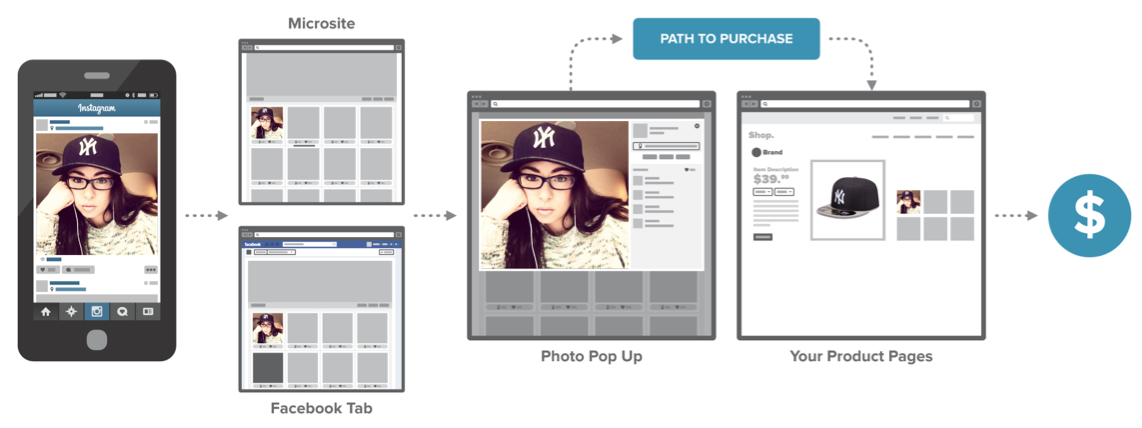
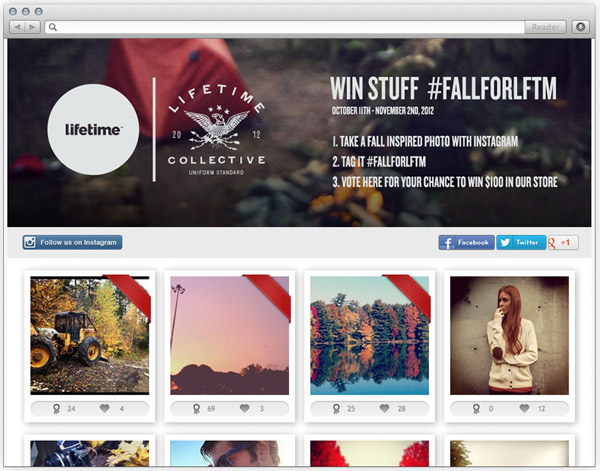
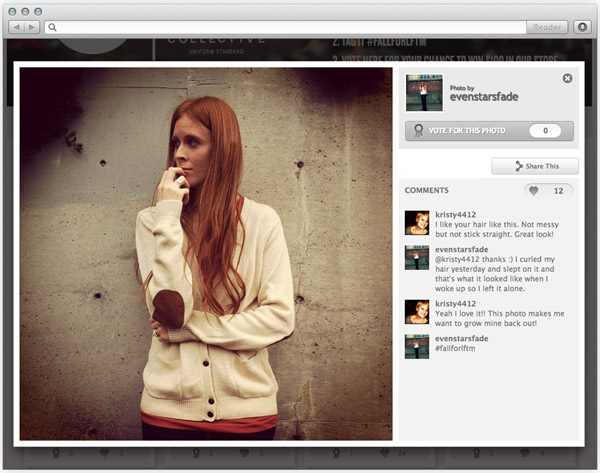
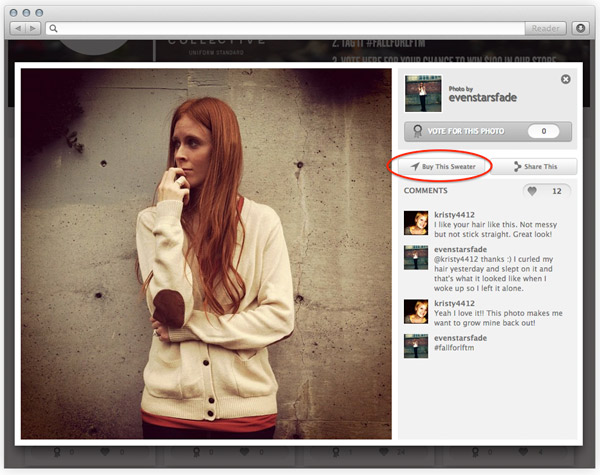
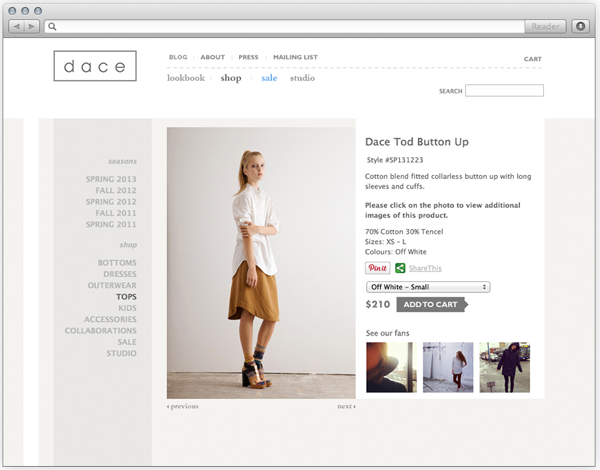
Comments (8)